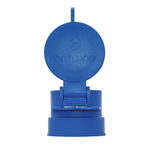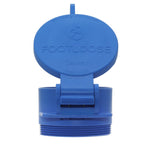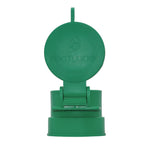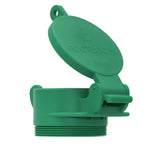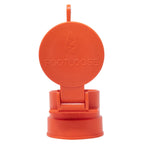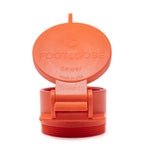You have no items in your shopping cart.
Manhole covers are an important feature of both urban and rural infrastructure systems. The manholes themselves provide safe and secure access to sewer systems, and the covers add a protective layer between the underground sewer system and the surface that all of us experience.
Although urban planners and plumbing professionals might find manhole covers inherently interesting, there are many facts about what they’re made of and the way they work that might surprise the average person.
What exactly are manhole covers, and how do they work? In this article, we’ll review:
- What purpose manhole covers serve
- How much manhole covers weigh
- What they’re made of
- What shapes they come in
- Key safety tips when dealing with manhole covers
What is a Manhole Cover, and What Does it do?
Ever since our sewers transitioned to an underground system in the mid-1800s, we’ve needed a way to access the sewers beneath our feet. Manhole covers provide a sturdy and unbreakable, yet liftable, barrier between the outside world and the entrance to our underground sewer systems. Too heavy for one non-professional to lift, manhole covers are a safety feature, a point of access, and an interesting piece of infrastructure all in one.
How Heavy are Manhole Covers?
The standard manhole cover weighs more than 250 pounds, or 113 kilograms. Manhole covers need to strike the correct balance between being heavy enough to not get rattled or dislodged when busy traffic drives over them, but not being so heavy that service workers can’t reasonably lift them with a manhole hook. It’s also important that non-authorized people—like a group of nosy teenage boys, for example—aren’t able to lift up the manhole cover and enter the sewer system without the proper permission, training, and equipment.
What are Manhole Covers Made of?
Manhole covers are typically made of either concrete or iron, or a mixture of both materials. Manhole cover castings are used as a template for the cover itself, which means that iron, concrete, or the mixture is poured into a pre-printed design. While the actual finished product is concrete or iron, the casts are usually either wood or aluminum.

What Shapes do Manhole Covers Come in?
Though you may come across a square manhole cover every now and again, the vast majority of manhole covers are round.
Perhaps surprisingly, there are several reasons why manhole covers are round; in addition to being easy to roll from place to place, the geometry of round manhole covers also makes it easier to slide them into place without worrying about them falling into the hole itself. Considering that the word “manhole” literally describes a hole through which people can enter the sewer system, it’s vital to have a circular cover that can’t fall through the hole and potentially injure a worker.
To learn more reasons why manhole covers are round and how they evolved to look the way they do, read our recent blog post on this very topic.
You may have also noticed that manhole covers have different designs on their surfaces, perhaps depending on which city you’re in, or which area you’re in within your own neighborhood. Are the patterns on top of manhole covers some secret symbol that speak to the location they’re placed in? Or are they totally random?
If you’re looking at a manhole cover with a delightful, original pattern, like an animal or a skyline, chances are you’re looking at a cover that was created prior to 1950. After 1950, the unique manhole cover designs gave way to a more uniform patterning; covers printed after this time normally follow a standard waffle pattern, a cross-hatch, woven-style pattern, or a concentric circle pattern.
Importance of Safety When Working with Manholes
As we mentioned above, the immense weight of a manhole cover makes it difficult, and potentially dangerous, to handle. When attempting to lift or adjust a manhole cover safely, remember to wear proper protective gear. This includes close-toed shoves, heavy gloves, long pants, and goggles, if you’re concerned about projectile debris or dust. You should also make sure that the manhole you’re entering is environmentally safe. If you’re worried about atmospheric conditions like sewer gas, be sure to work with a professional to verify that the sewer is safe to enter.
Interested in learning other useful facts about manholes, sewer systems, and plumbing? Browse through some of our other articles on our blog page.



